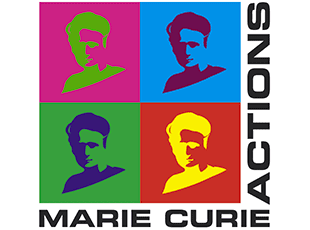Artery-on-chip to target vascular diseases: CAR-OAC
Strokes remain the second leading cause of mortality, the third for disability, and a top contributor to dementia and depression globally.
To date, existing tools are insufficient to target preceding vascular pathology, leading to its progression to a critical state, particularly carotid artery occlusion.
This project is completed now. If interested, feel free to contact us.
Carotid artery-on-chip to target vascular diseases: introduction

Subtle changes of gradual carotid occlusion put the entire cerebral vasculature at risk of an ischemic event.
Suboptimal monitoring leads to a late discovery of vascular atherothrombosis, usually only after an ischemic event.
Current research focuses on the effects of atherothrombosis on cerebral perfusion.
They study how plaques and emboli create temporary occlusion, leading to a transient ischemic attack or emboli dislodge from wider carotid arteries and relodge in narrow cerebral arteries, which causes an ischemic or hemorrhagic event. This could be better observed with the help of an artery-on-chip.
Current treatments mainly focus on individuals already affected by cardiovascular diseases caused by such changes.
To bridge this gap between the rapid deterioration of vascular pathology and the temporary or total occlusive events in the carotid artery, microfluidic technology can serve as a platform to model deteriorating vascular physiology with a carotid artery-on-chip.
This technology could provide a platform to investigate clinical interventions besides thrombectomies while providing a tool to develop prophylactics for a wide range of individuals who are anatomically at risk but may not yet show disease symptoms.
Microfluidic organ-on-chip engineering has enabled the optimization of microscale instruments that can mimic physical and biological changes to vascular cells that could contribute to occlusive pathology [1, 2], which makes the development of an artery-on-chip possible.
The influence of shear forces, rheological changes, and varied physiological conditions can be studied on cellular and molecular scales in an environment closer to nature than classical 2-D cell cultures.
Ultimately, this microfluidic device may detect occlusion and investigate the actions of drugs of interest on vascular atherothrombosis while helping to develop clinical interventions that help maintain an unrestricted blood flow in carotid vessels.
Carotid artery-on-chip to investigate thrombotic and atherothrombotic events: project description
The goal of this artery-on-chip project is to develop a detailed and representative microfluidic organ-on-chip device that combines the primary biophysical, biological, and molecular cues that are typically found in carotids, which are starting to undergo occlusive atherothrombotic pathology.
Platelets, the leading cellular influencers of thrombotic events, can be introduced into the unit to examine their associations with the endothelial cells and fatty deposits.
Flow conroller and bubble traps with their respective components (Elveflow) will be integrated to optimize the lifespan of cells in the vascular atherothrombosis mimetic device, which will be the artery-on-chip. To see the results of this project, make sure to read this review written by Oore-Ofe.

References
- Greineder CF, Johnston I, Villa CH, Cines DB, Poncz M, Muzykantov VR. A Microfluidic Model of Microvascular Inflammation: Characterization and Testing of Endothelial-Targeted Therapeutics. Blood. 2015;126(23):3454-3454.
- Griffin MT, Kim D, Ku DN. Shear-induced platelet aggregation: 3D-grayscale microfluidics for repeatable and localized occlusive thrombosis. Biomicrofluidics. 2019;13(5):054106.
This project has received funding from the European Union’s Horizon research and innovation program under the Marie Sklodowska-Curie grant agreement No 843279 (CAR-OAC project).
Researcher

Oore-ofe Olumuyiwa Akeredolu
Post-doctoral Fellow
- Doctor of Philosophy in Physiology (University of Pretoria, South Africa)
- Master of Science in Biomedical Sciences (University of North Texas Health Science Center, Fort Worth, USA)
- Bachelor of Science in Biology with a minor in Chemistry (University of Houston, Houston, USA)
Areas of expertise:
Advanced cellular imaging (using light-, electron-, fluorescence-, and atomic force microscopy), platelet and red blood cell structural biology, disease-induced thrombosis.

